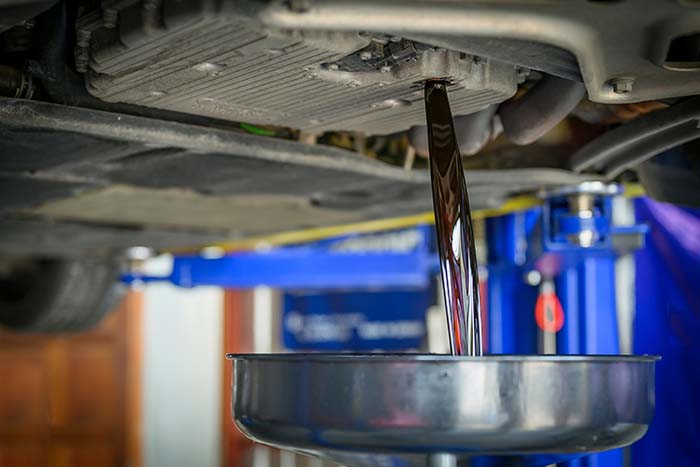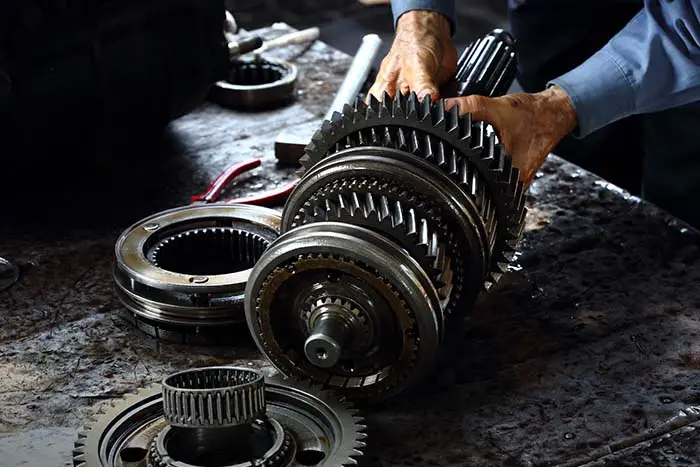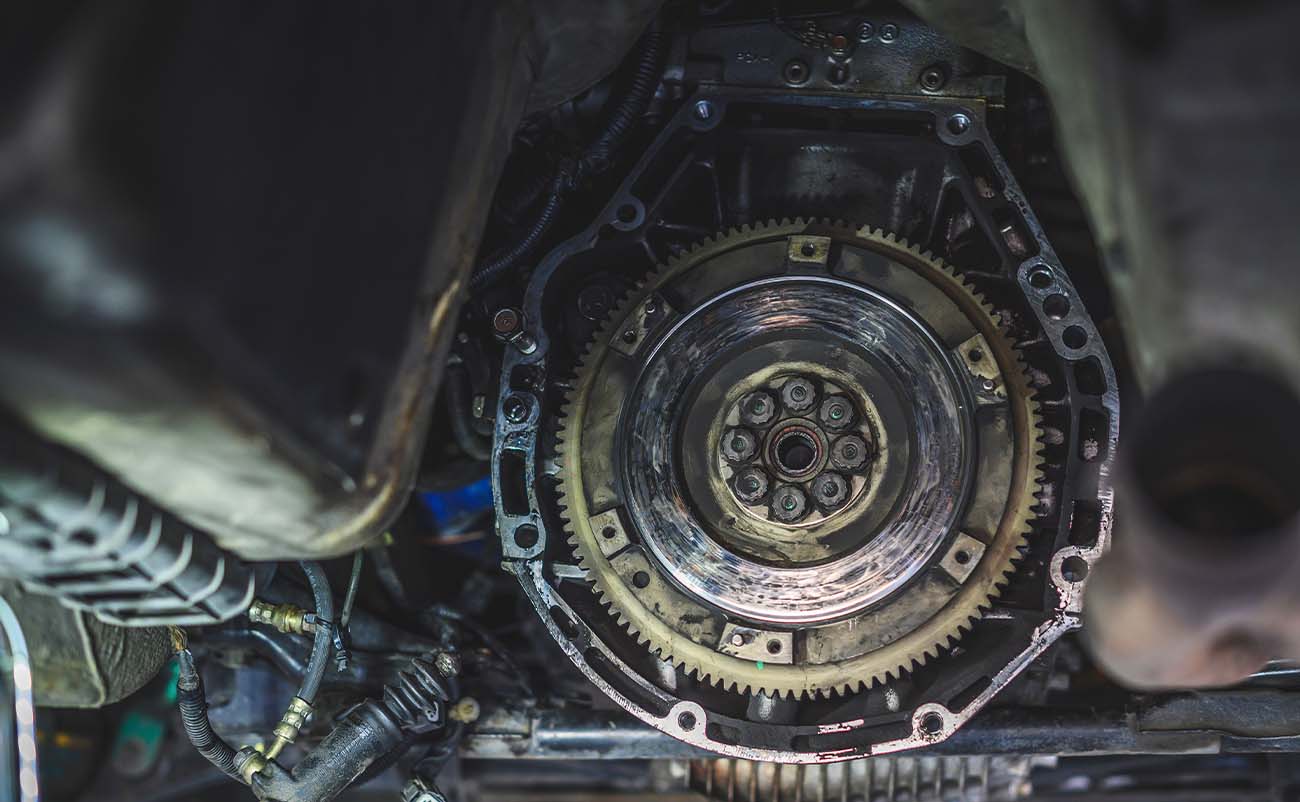Transmission problems are something that will send almost any car owner into shock. They immediately think that their car will be in the shop for weeks and owe thousands in repair bills. While that is unfortunately sometimes the case, a slipping transmission is not always the worst-case scenario. There might be a simple solution to the problem sometimes. Keep reading as we tell you seven reasons why your transmission might be slipping, as well as give you some repair tips and cost estimates.
Table of Contents
Common Causes Of A Slipping Transmission
 Maybe you have discovered that your transmission is slipping, but you are wondering exactly what could cause that. Here are some of the most common causes of a slipping transmission. Later, we will discuss what to do to fix the problem.
Maybe you have discovered that your transmission is slipping, but you are wondering exactly what could cause that. Here are some of the most common causes of a slipping transmission. Later, we will discuss what to do to fix the problem.
#1. Low Or Old Transmission Fluid
Your automatic transmission fluid is a vital part of the proper operation of your transmission. If you have a low fluid level, then it can cause many problems. Similarly, burnt or contaminated fluid will cause issues as well. Contaminants in the fluid can cause overheating and even bigger problems. Your regular maintenance schedule should include either a transmission fluid change or a transmission fluid flush regularly. Generally, this should be performed every 40,000 to 50,000 miles. Your fluid should be a bright red color and should not smell burned. If you have low transmission fluid, check for a transmission leak around the pan gasket and other areas. Make sure that you fix the transmission fluid leak and keep a check on your fluid level.
#2. Bad Torque Converter
The torque converter is the part of your transmission that connects directly to the engine. Torque converter issues can cause the power of the engine not to transfer through the transmission properly. This might start to show up simply as a slipping transmission and get worse over time. If you notice slipping, then your torque converter might be the culprit.
#3. Worn Or Broken Bands
The bands inside your transmission are meant to fit tightly as they rotate and switch gears. As the bands get older, they start to become worn and get loose. In some cases, they might even break completely. Worn bands usually result in a slipping transmission, while broken bands generally present a more significant problem like transmission failure or failure to shift gears. In some cases, the bands might be able to be adjusted to fit tightly again. Other times, your transmission might need a total rebuild.
#4. Improperly Working Clutch
While you might associate a clutch with a manual transmission, your automatic transmission has clutches inside it as well. In some respects, they perform very similar functions. If the clutch inside your transmission is not working correctly, then you might start to feel slipping or improper shifting. A reliable service center can help you diagnose the exact problem accurately and determine whether it is a clutch problem.
#5. Failed Solenoid
Your transmission’s solenoid helps to control the amount of fluid distributed through the transmission. As we have already discussed, transmission fluid is vital to the proper operation of your transmission. Solenoid problems can lead to low hydraulic pressure with the fluid and cause transmission slippage and other issues. A constant low transmission fluid level can also lead to transmission solenoid problems.
#6. Software Problems
Your car’s transmission relies on more parts than just the torque converter, valve body, or solenoid to work correctly. The car’s computer also plays a huge role. It monitors the throttle position, fluid pressure, speed, and other factors to help control the transmission. Sometimes, the software in your car’s computer might malfunction, and this can lead to transmission issues like slipping or missed shifts. Diagnosing this problem can be difficult, but an auto repair shop can flash your ECM with new software reasonably quickly. You might even see a check engine light if you have computer problems.
#7. Normal Wear & Tear
Even if you take care of your transmission and perform the required maintenance, you might eventually experience problems. No transmission will last forever, and normal wear and tear will eventually lead to issues. The bands will start to loosen, you might wear out gears, and clutch plates begin to get worn. If you keep your car long enough, you are bound to need a transmission repair at some point.
Automatic Transmission Basics
While an automatic transmission makes things very easy for the driver, they are very complicated pieces of equipment. Sure, the driver places the transmission into drive and presses the gas pedal. The transmission shifts gears without the driver even needing to think about it. However, there is a lot that goes into accomplishing this.
Your automatic transmission has many intricate parts inside. There are gears, transmission bands, clutches, check balls, and other pieces. Your automatic transmission fluid both lubricates the internal components and provides pressure to specific components within the transmission. There is a torque converter attached to your engine’s flywheel that spins transmission fluid into the passageways of the transmission. Your car’s computer is also involved in the process. It is connected to the transmission’s solenoid to tell the transmission when to shift, how hard to shift, and which gear to switch into.
While this is a very high-level view of your transmission, it gives you an idea of just how complicated it is. Manual transmissions, on the other hand, are not as complex. While they still have many moving pieces, their operation is not nearly as complicated. The driver presses the clutch pedal and shifts into the proper gear at the appropriate time. Manual transmissions require much more effort on the driver’s part, but they also tend to have fewer problems than automatic transmissions.
What A Slipping Transmission Feels Like
So, just what does a slipping transmission feel like? Perhaps your car feels a little odd as you drive it, but you aren’t quite sure what it is. A slipping transmission tends to feel like your car is jerking or surging. You might even notice that the engine revs to a high RPM between gear changes. As you are driving, the transmission should be providing constant power to the wheels. When the transmission starts to slip, there are times when no power is being transferred to the wheels.
When this happens, you will notice that the car seems to lose power for speedy intervals. Hence, this creates the jerking or surging movement that you might feel in your vehicle. That is one of the most common signs of a slipping transmission. A slipping transmission might also have trouble shifting gears. This is why you might notice that your RPMs will rev higher in between shifts. The transmission is having trouble quickly shifting from one gear to the next, and the long pause gives the engine time to rev until that power can again be sent through the transmission to the wheels. You might also hear strange noises like a clunking sound as the transmission attempts to shift.
How To Fix A Slipping Transmission
The way that you need to fix a slipping transmission depends on precisely what is causing the problem. If you have old or dirty fluid, a simple transmission service like a fluid change or flush might solve the problem. That is always a great place to start as it is not extremely expensive to get new fluid. First, take a look at your dipstick and see if the fluid looks fresh. If not, then definitely go ahead and perform a fluid flush or change.
If that does not solve the problem, you should probably visit an expert at a transmission repair facility. You might need a new solenoid, an adjustment to the bands, or even a complete rebuild. Those are not typically jobs that you will be able to tackle yourself, and they require a professional mechanic to perform them correctly.
Average Cost Of Slipping Transmission Repair
 If you can get by on a simple fluid flush service, then the repair should only cost you around $250. You can even perform a fluid change yourself for probably under $100. If that doesn’t fix things, then you might be looking at a much higher bill. Transmission problems usually do not come cheap because it requires a lot of time and expertise to fix them.
If you can get by on a simple fluid flush service, then the repair should only cost you around $250. You can even perform a fluid change yourself for probably under $100. If that doesn’t fix things, then you might be looking at a much higher bill. Transmission problems usually do not come cheap because it requires a lot of time and expertise to fix them.
If you need major repairs like a transmission rebuild, you can expect a bill of around $1,500 – $2,000. High-end vehicles will cost you even more for this repair. Lastly, the worst-case scenario is when you need an entirely new transmission. A new transmission will cost you anywhere from $3,000 to $5,000. You should seriously consider at that point whether your car is even worth that much. You might be better off selling it for scrap and buying a new car without any transmission problems.
The Bottom Line
A slipping transmission can be frustrating and can lead to transmission failure if left unchecked. It could be caused by something as simple as old transmission fluid, so ensure that you perform regular maintenance on your transmission. If it’s not an easy fix, you will likely need to visit an auto repair shop and have your car checked by an expert. Transmission issues are challenging to diagnose and fix, so most people cannot fix them themselves. You might spend anywhere from a few hundred to a few thousand dollars depending on the specific issue.
Frequently Asked Questions
Can I drive with a slipping transmission?
While it is possible to drive with a slipping transmission, it is not a good idea. If your transmission is slipping, it often means that more significant problems are not far off. Continuing to drive it can cause further damage and can also be dangerous. You might get into traffic, and your transmission starts slipping worse or fails altogether. That is not a situation that you want to get into when it could be avoided.
What is the difference between a slipping transmission and a broken transmission?
A slipping transmission still works properly most of the time. However, there are times when the engine’s power does not make it to the wheels properly. A broken transmission is usually not drivable at all. You should remember that a slipping transmission will usually become a broken transmission quickly if it is not repaired.
How often should I get my transmission serviced?
It would be best if you serviced your transmission every 40,000 to 50,000 miles. This includes a fluid change or fluid flush. Other than that, there is not much service that needs to be performed on a transmission. As long as the fluid stays fresh, the transmission should continue to operate correctly for many years.

